November 22, 2022
 by Ben Johnson / November 22, 2022
by Ben Johnson / November 22, 2022

Give a little TLC to your brand audience.
Imagine you're at a Japanese restaurant to try sushi for the first time. As you enter, your eyes meet a completely different sight. You imagined zen-like serenity, but got hammered with the ruckus of staff and customers.
Without wasting a second more, you storm out.
The place simply made you feel unwelcome. Similarly, if a customer encounters a poor user experience on your brand website, they will bounce and never come back. What retains their attention is website personalization.
Brands today use the power of personalization engines to segment consumer data and create tailored experiences that resonate with purchase intent. The idea is to help the buyer find a way to the right solution without losing the plot of what they need.
You might be wondering whether you need to be a coding ninja for website personalization. Let's find out!
Website personalization is the process of creating targeted product experiences for consumers on a brand's website. It's a way to analyze consumer demographics, intent, and sample data to highlight their brand services in the best light. Diversity, equality, and inclusion are also key factors in website personalization.
Rather than showing a one-size-fits-all page to a visitor, you use available first-party (your own data) and third-party data (enriched from a trusted source) to make a page more relevant, responsive, and insightful for every landing visitor.
Website personalization is not just about what users see, but cumulative shifts in page layouts, additional content collaterals, and so much more. The impact of website personalization on your success of overall value proposition strategy and traffic goals is huge and measurable.
When we talk about a well-structured website, we refer to the harmonious relationship of several of its building blocks. Whether you're designing a static landing page that is informational in nature or a multimedia product page that promotes your application, you need to factor in the following concepts:
Consumers said that receiving personalized communication was a key factor in prompting their consideration of a brand.
Source: McKinsey
Ever since the internet sprang into existence, brands have been vying for a good online reputation. The struggle started from just having a basic HTML website to adding JSON, React.JS, XML, and PHP languages to their code to create responsive websites.
They also now use location details, product types, and prices that direct consumers to the nearest brick-and-mortar stores. With uncountable inventions in digital technology, networking, and social media, brands have come one step closer to their consumers.
Tip: Some brands take personalization a step further and include AR marketing on their websites. This technique helps individuals visualize the product in their surroundings, take a virtual demo, and then decide what to do.
Here are some more examples of website personalization that drives traffic to your website:
At first glance, website personalization can seem like a daunting subject to approach. There are simply so many possible experiments, audience segments, and data points at your disposal. Plus, most instances of personalization require some level of technical knowledge. Fret not!
We’ve found five quick and easy personalization instances that nearly any site can deploy. We’ll walk you through what they are, excellent examples of the techniques in action, and a few software tools you can use to help you launch these changes on your own site.
Start adjusting the content on your page for each unique visitor with a unique buyer persona. Let’s consider an example. On our homepage at Proof, when we don’t have information on a visitor’s industry, we display the following generic headline:
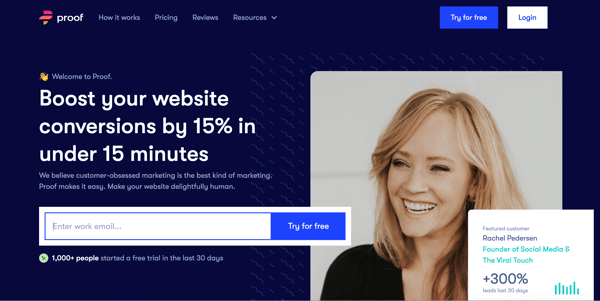
But if we’re able to identify a visitor’s industry, occupation, or other details (in this case, the industry is e-commerce) from their past behavior or responses on our site, we can customize content to suit their needs.

Buyer intent analysis is accomplished by getting visitor information off websites like Unbounce or engagebay with A/B testing.
Drift, a digital marketing agency, also follows the exact same protocol. If you’re in the remarketing ad bucket and you click through to their site, you’ll see a landing page that describes how “Everything starts with a conversation.’
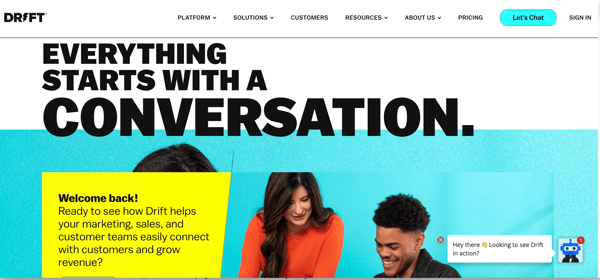
But if you’re in sales and see an online ad about Drift, you’re pushed to this page declaring Drift as “the secret weapon” for your sales and revenue teams:
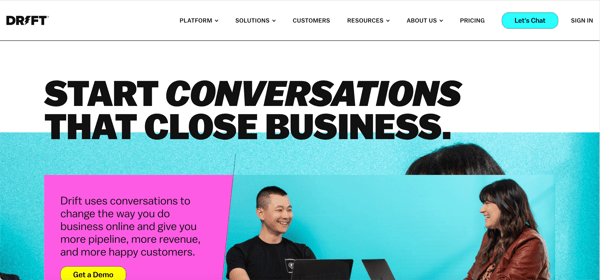
At its simplest, content recommendation is a system of suggesting relevant content to visitors who have already engaged with your website in some way. It is a form of native advertisement that suggests additional content along with existing content.
You might see content recommendations either in form of opt-in push notifications, top strips, or content widgets entitled "suggested reads" or "Users are also interested in". It creates a fear of missing out on the visitor and compels them to keep reading.
Here’s an example of this tactic in play on the Salesforce blog where they use smart content to personalize the journey for their visitors:
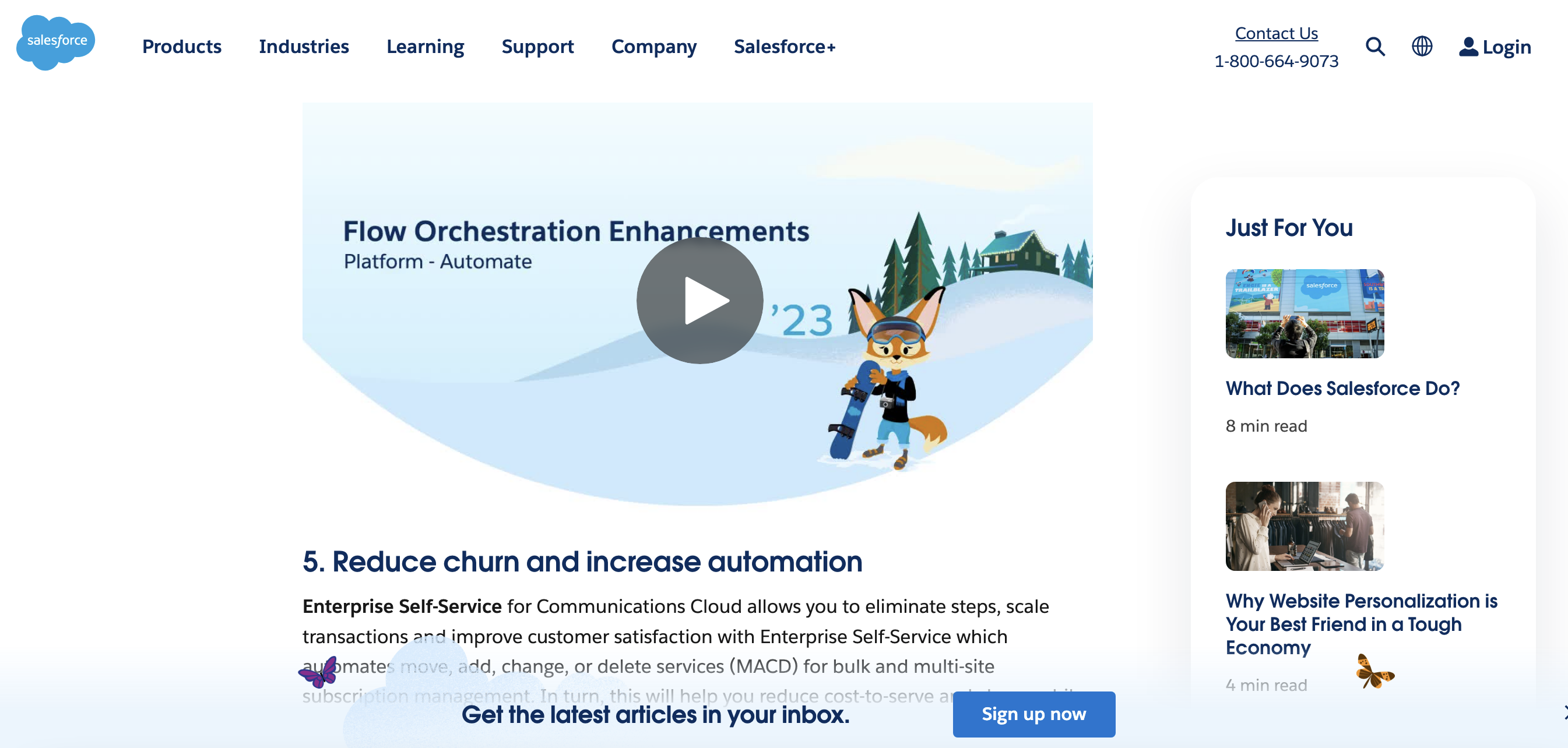
Source: Salesforce
Pique, an eCommerce site with a popular health blog, goes a step further to recommend personalized eBooks to visitors' benefit.
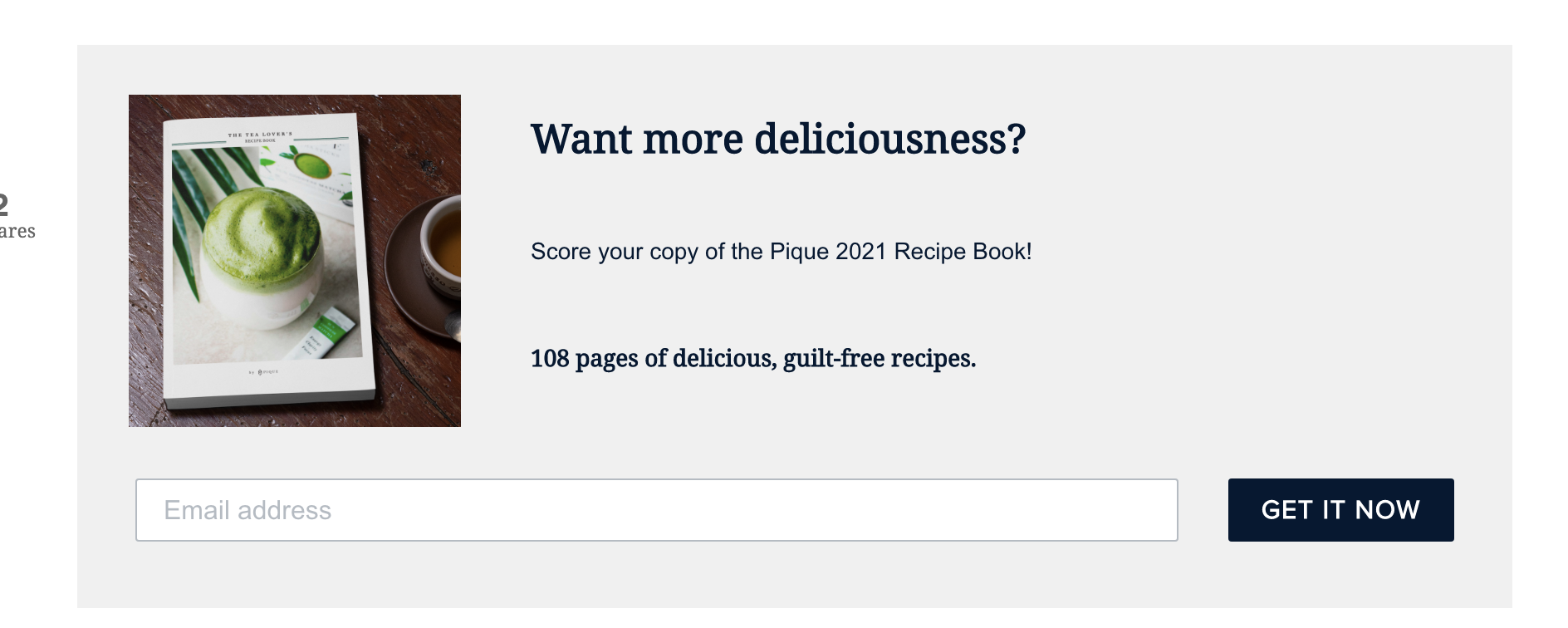
Source: Pique
The result? Readers see more relevant content — and the site sees visitors stay longer. Win-win!
When a visitor comes to your site — you have an opportunity to create meaningful CTAs. Most popular content management systems, regardless of the sophistication of their data program, at least collect data regarding whether someone is a first-time visitor, a returning visitor, a lead, or a customer. Based on that data, the CTA is customized.
And many companies use an even more sophisticated lead-scoring method than that. At a basic level, most sites can create four different versions of a CTAs for these scenarios:
| First-time visitor | Welcome the visitor to your site, give an elevator pitch of your product |
| Returning visitor | Welcome them back to your site, and remind them about why they visited last |
| Lead nurturing | Nudge them gently to finish signing up or purchasing a specific order with content. |
| Customer | Delightfully welcome them back, upsell |
Let's see an example of this in action.
A brilliant example of this is Gusto’s homepage. On the first visit to their site, you see the page below. The CTA header says "one place for payroll, benefits and so much more".
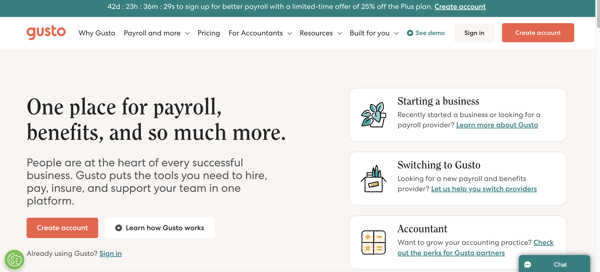
But if you’re a customer, Gusto knows it. Here’s the same homepage that this segment of visitors sees:
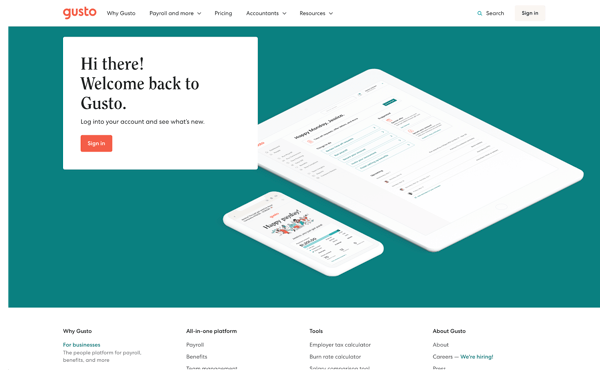
The first-time visitor and the customer see the same URL, but the experience comes across as far more relevant for each group.
A breadcrumb is a small text path, that a user traverses in order to reach a current page on your website. The user can navigate from the top of the funnel (ToFU) pages to the Middle of the Funnel (MoFU) to the bottom of the funnel (BoFu) page which is usually the payment window. Breadcrumb is a technical SEO aspect of website personalization that doesn't let your visitor lose track of things.
Note it, google loves breadcrumbs. Other than XML sitemaps, it tells the crawler how have you systemized and structured your website for human understanding.
You can create different sorts of creative breadcrumbs to create memoirs for users.
Your HTML headers on your website need to be succinct and sorted in decreasing order. For example, if your website's main heading says "De-facto CRM to automate your manual process", it doesn't read too much into your product. Rather than having this header as H1, you can repurpose it to "De-facto Sales CRM to close deals faster". This statement tells a visitor exactly where your product applies in the sales cycle.
Some tips to follow while designing headers:
The wildest concept of B2B marketing is that when someone wants to pay more money for your product (i.e. buy a high-tier or Enterprise plan), marketers often respond with more red tape: a barrage of questions required meetings, and many emails.
For example, if you say “I want to buy this software, here’s my credit card, I’ll pay anything” this is the response you get. “Ok great, can you fill out this form with 20 fields of information we already know about you, schedule a demo, talk with a qualifying rep for an hour, then we’ll the company decide if you’re a good fit.”
Consider Mention’s site. On their homepage, there’s a page that asks for your email to start the signup flow.
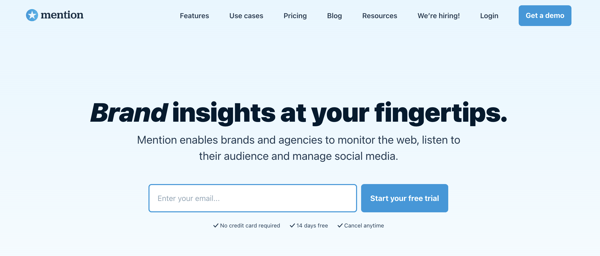
Mention keenly identifies this signup as an opportunity to delight their visitors by smartly identifying and validating data. As soon as you insert your email on the first page, they hit a database to pull demographic or firmographic data on you.
Then, on the next page, Mention auto-fills their form with information they’ve pulled about you. In the screenshot below, you’ll see that they pull your first name and last name from your provided email as well as carry your email from the first step. It creates a better experience for the consumer, and it acts as a gut check on a company’s data.
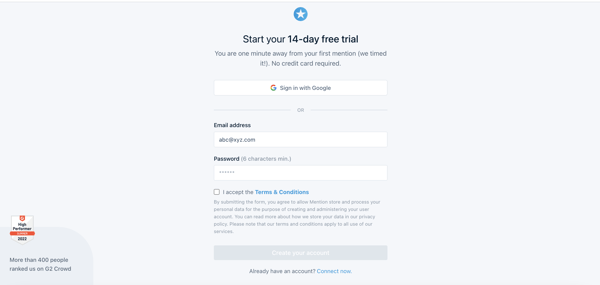
Taking different roads to the same destination of generating and nurturing MQLs is a multi-faceted process. Personalization requires connecting the dots between your brand and potential consumer through real-time segmentation, allocation, and analysis of their personal events, actions, and behavioral data.
Ingestion of this data from multiple sources can be centralized with a personalization engine, that aids in producing powerful, contextual experiences for consumers.
Customers are, on the whole, happier when they get what they want. They view your brand more highly, and consequently, stay for a lifetime.
Personalization can be a frightening topic for brands. It can seem time-intensive, hard to manage, and technically complex. And while this used to be the case, it’s no longer an issue.
There are tons of strategies that brands can start implementing today to build more engaging sites, and we hope the ones here were enough to get the creative juices flowing for you.
Learn how you can increase your email conversions drastically by building a winning email strategy.
Ben Johnson runs Content at Proof, a Y Combinator-backed startup that provides real-time social proof and personalization software. Over 18,000 sites trust Proof to help increase their conversion rates.
Concerns about inflation have greatly affected competition in e-commerce.
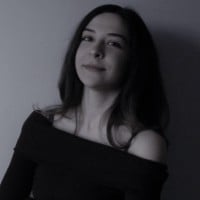 by Melike Ulaman
by Melike Ulaman
Most likely, you are a buyer of some sort.
 by Emily Thompson
by Emily Thompson
Concerns about inflation have greatly affected competition in e-commerce.
 by Melike Ulaman
by Melike Ulaman



